João Pandeirada
PASO -- Astronomy and Space Situational Awareness in a Dark Sky Destination
Apr 05, 2024Abstract:The Pampilhosa da Serra Space Observatory (PASO) is located in the center of the continental Portuguese territory, in the heart of a certified Dark Sky destination by the Starlight Foundation (Aldeias do Xisto) and has been an instrumental asset to advance science, education and astrotourism certifications. PASO hosts astronomy and Space Situational Awareness (SSA) activities including a node of the Portuguese Space Surveillance \& Tracking (SST) infrastructure network, such as a space radar currently in test phase using GEM radiotelescope, a double Wide Field of View Telescope system, a EUSST optical sensor telescope. These instruments allow surveillance of satellite and space debris in LEO, MEO and GEO orbits. The WFOV telescope offers spectroscopy capabilities enabling light curve analysis and cosmic sources monitoring. Instruments for Space Weather are being considered for installation to monitor solar activities and expand the range of SSA services.
ATLAS: Deployment, Control Platform and First RSO Measurements
Nov 07, 2022Abstract:The ever increasing dependence of modern societies in space based services results in a rising number of objects in orbit which grows the probability of collisions between them. The increase in space debris is a threat to space assets, space based-operations and led to a common effort to develop programs for dealing with it. As part of the Portuguese Space Surveillance and Tracking (SST) project, led by the Portuguese Ministry of Defense (MoD), Instituto de Telecomunica\c{c}\~oes (IT) is developing the rAdio TeLescope pAmpilhosa Serra (ATLAS), a new monostatic radar tracking sensor located at the Pampilhosa da Serra Space Observatory (PASO), Portugal. The system operates at 5.56 GHz and aims to provide information on objects in low earth orbit (LEO), with cross sections above 10 cm$^2$ at 1000~km. The sensor is tasked by the Portuguese Network Operations Center (NOC), located in the Azores island, which interfaces with the EU-SST network.
A Portuguese radar tracking sensor for Space Debris monitoring
Nov 03, 2021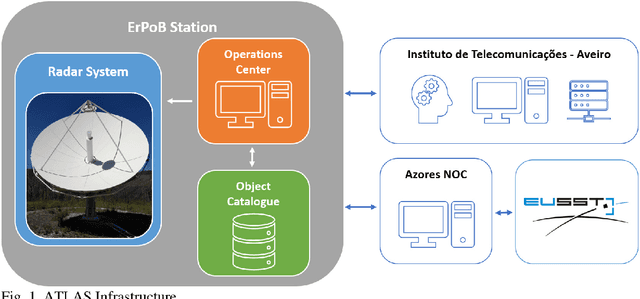
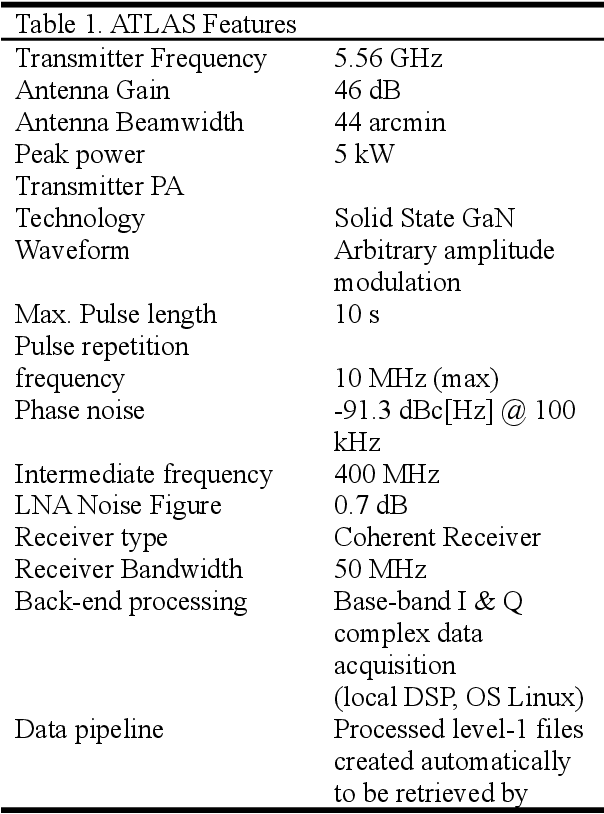
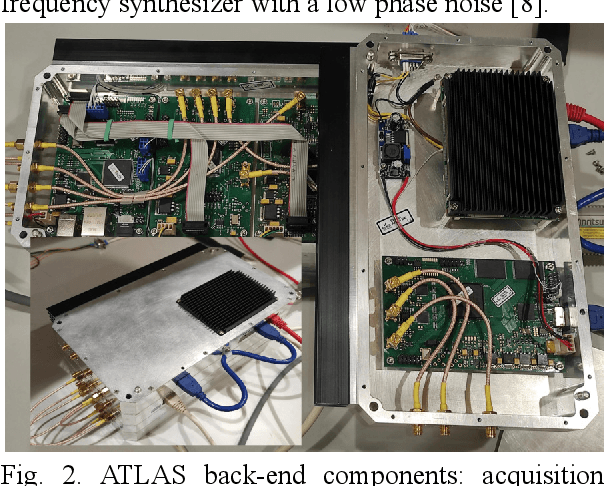
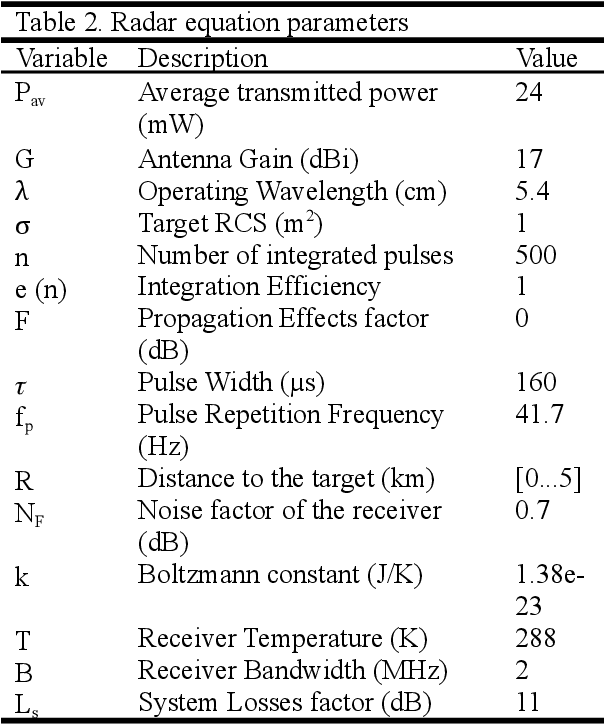
Abstract:The increase in space debris is a threat to space assets, space based-operations and led to a common effort to develop programs for dealing with this increase. As part of the Portuguese Space Surveillance and Tracking (SST) project, led by the Portuguese Ministry of Defense (MoD), the Instituto de Telecomunica\c{c}\~oes (IT) is developing rAdio TeLescope pAmpilhosa Serra (ATLAS), a new monostatic radar tracking sensor located at the Pampilhosa da Serra Space Observatory (ErPoB), Portugal. The system operates at 5.56 GHz and aims to provide information on objects in low earth orbit (LEO) orbits, with cross sections above 10 cm2 at 1000 km. ErPoB houses all the necessary equipment to connect to the research and development team in IT-Aveiro and to the European Union Space Surveillance and Tracking (EU-SST) network through the Portuguese SST-PT network and operation center. The ATLAS system features digital waveform synthesis, power amplifiers using Gallium Nitride (GaN) technology, fully digital signal processing and a highly modular architecture that follows an Open Systems (OS) philosophy and uses Commercial-Off-The-Shelf (COTS) technologies. ATLAS establishes a modern and versatile platform for fast and easy development, research and innovation. The whole system (except antenna and power amplifiers) was tested in a setup with a major reflector of opportunity at a well defined range. The obtained range profiles show that the target can be easily detected. This marks a major step on the functional testing of the system and on getting closer to an operational system capable of detecting objects in orbit.
New SST Optical Sensor of Pampilhosa da Serra: studies on image processing algorithms and multi-filter characterization of Space Debris
Jul 05, 2021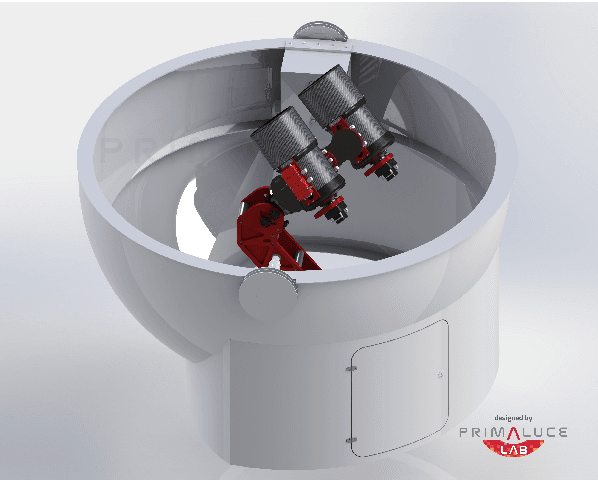
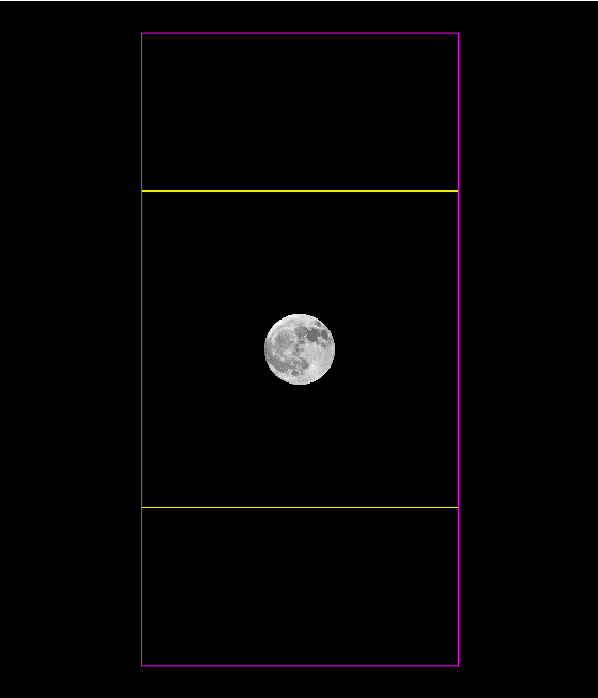
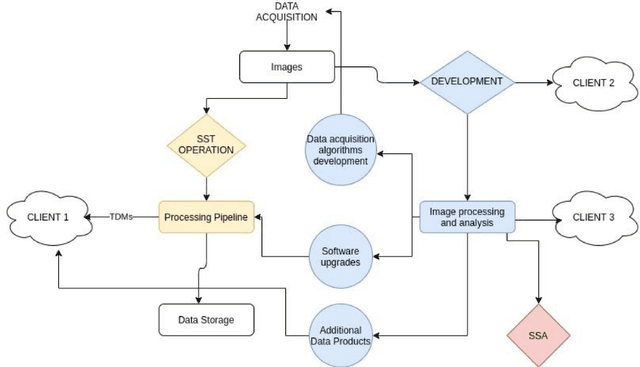
Abstract:As part of the Portuguese Space Surveillance and Tracking (SST) System, two new Wide Field of View (2.3deg x 2.3deg) small aperture (30cm) telescopes will be deployed in 2021, at the Pampilhosa da Serra Space Observatory (PASO), located in the center of the continental Portuguese territory, in the heart of a certified Dark Sky area. These optical systems will provide added value capabilities to the Portuguese SST network, complementing the optical telescopes currently in commissioning in Madeira and Azores. These telescopes are optimized for GEO and MEO survey operations and besides the required SST operational capability, they will also provide an important development component to the Portuguese SST network. The telescopes will be equipped with filter wheels, being able to perform observations in several optical bands including white light, BVRI bands and narrow band filters such as H(alpha) and O[III] to study potential different objects' albedos. This configuration enables us to conduct a study on space debris classification$/$characterization using combinations of different colors aiming the production of improved color index schemes to be incorporated in the automatic pipelines for classification of space debris. This optical sensor will also be used to conduct studies on image processing algorithms, including source extraction and classification solutions through the application of machine learning techniques. Since SST dedicated telescopes produce a large quantity of data per observation night, fast, efficient and automatic image processing techniques are mandatory. A platform like this one, dedicated to the development of Space Surveillance studies, will add a critical capability to keep the Portuguese SST network updated, and as a consequence it may provide useful developments to the European SST network as well.
Design of pulsed waveforms for space debris detection with ATLAS
Jul 05, 2021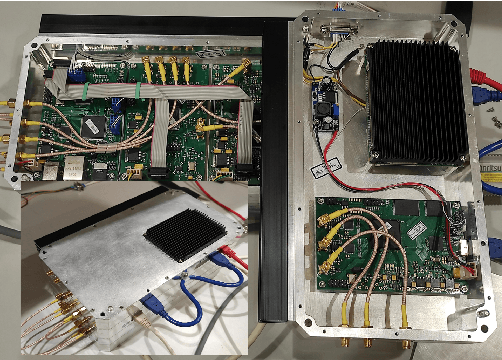
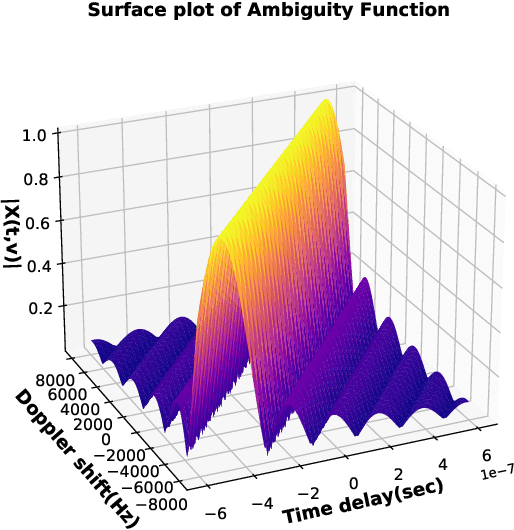
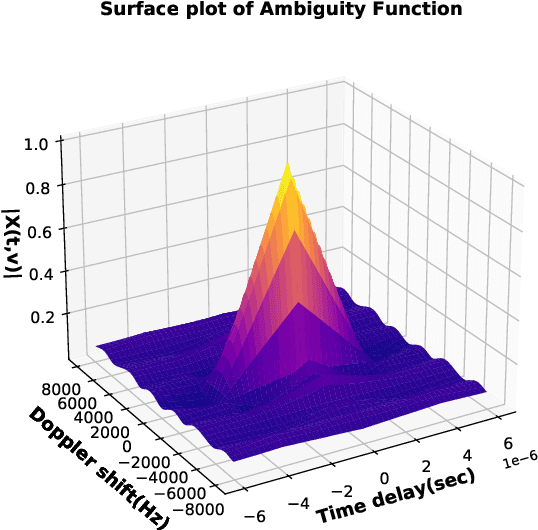

Abstract:ATLAS is the first Portuguese radar system that aims to detect space debris. The article introduces the system and provides a brief description of its capabilities. The system is capable of synthesizing arbitrary amplitude modulated pulse shapes with a resolution of 10 ns. Given that degree of freedom we decided to test an amplitude modulated chirp signal developed by us and a nested barker code. These waveforms are explained as well as their advantages and drawbacks for space debris detection. An experimental setup was developed to test the system receiver and waveforms are processed by digital matched filtering. The experiments test the system using different waveform shapes and noise levels. Experimental results are in agreement with simulation and show that the chirp signal is more resilient to Doppler shifts, has higher range resolution and lower peak-to-sidelobe ratio in comparison with the nested barker code. Future work in order to increase detection capabilities is discussed at the end.
Development of the first Portuguese radar tracking sensor for Space Debris
Feb 20, 2021



Abstract:Currently, space debris represents a threat for satellites and space-based operations, both in-orbit and during the launching process. The yearly increase in space debris represents a serious concern to major space agencies leading to the development of dedicated space programs to deal with this issue. Ground-based radars can detect Earth orbiting debris down to a few square centimeters and therefore constitute a major building block of a space debris monitoring system. New radar sensors are required in Europe to enhance capabilities and availability of its small radar network capable of tracking and surveying space objects and to respond to the debris increase expected from the New Space economy activities. This article presents ATLAS, a new tracking radar system for debris detection located in Portugal. It starts by an extensive technical description of all the system components followed by a study that estimates its future performance. A section dedicated to waveform design is also presented, since the system allows the usage of several types of pulse modulation schemes such as LFM and phase coded modulations while enabling the development and testing of more advanced ones. By presenting an architecture that is highly modular with fully digital signal processing, ATLAS establishes a platform for fast and easy development, research and innovation. The system follows the use of Commercial-Off-The-Shelf technologies and Open Systems which is unique among current radar systems.
 Add to Chrome
Add to Chrome Add to Firefox
Add to Firefox Add to Edge
Add to Edge